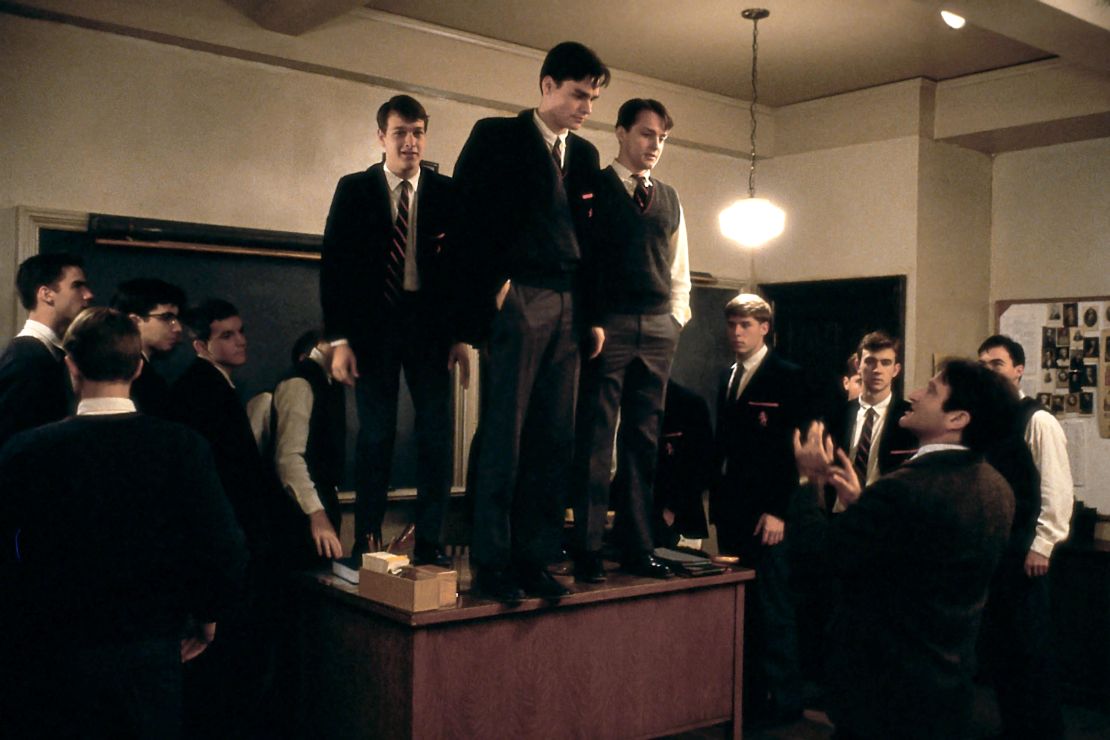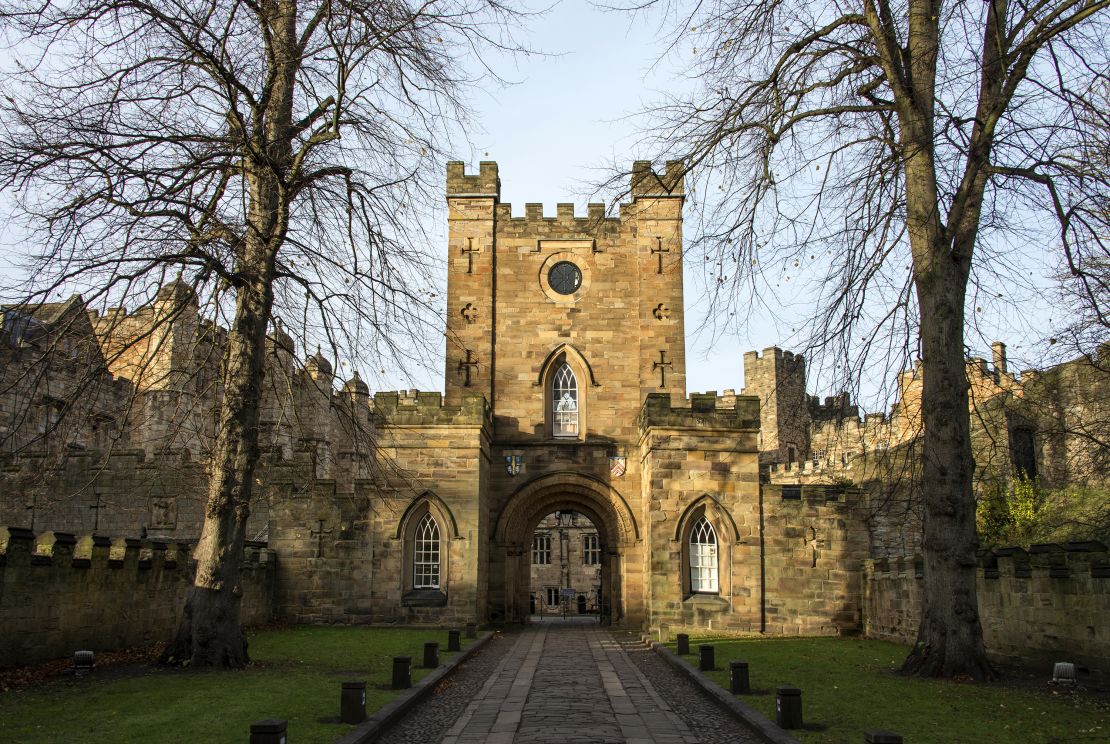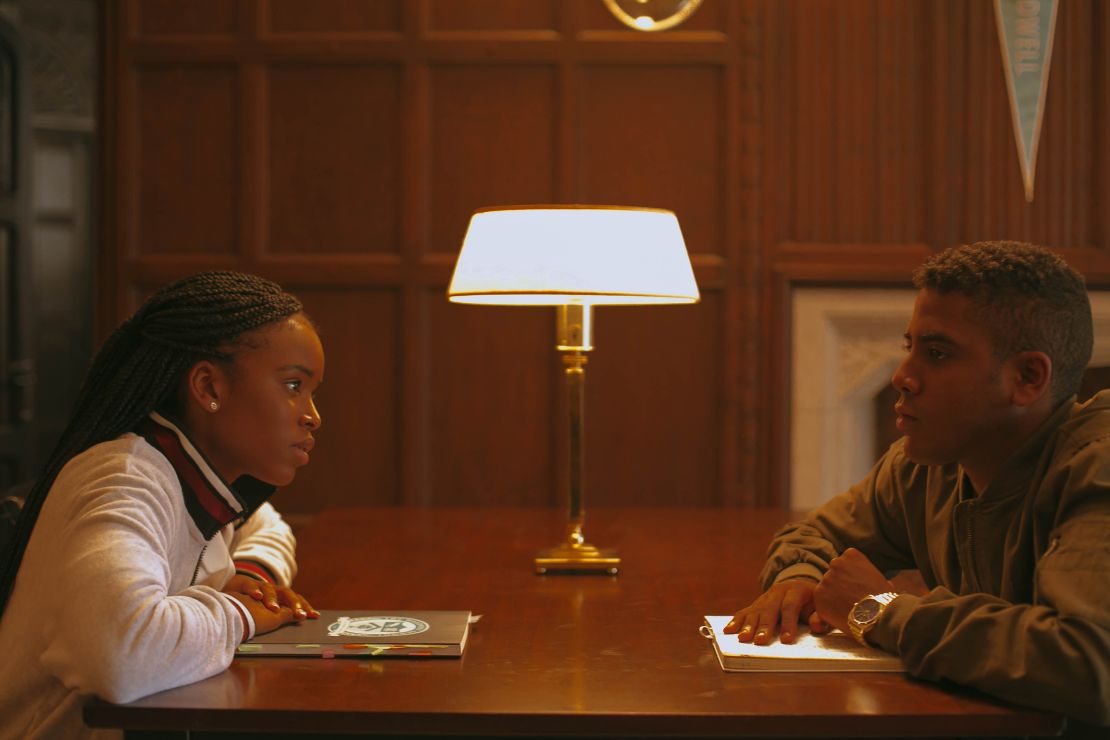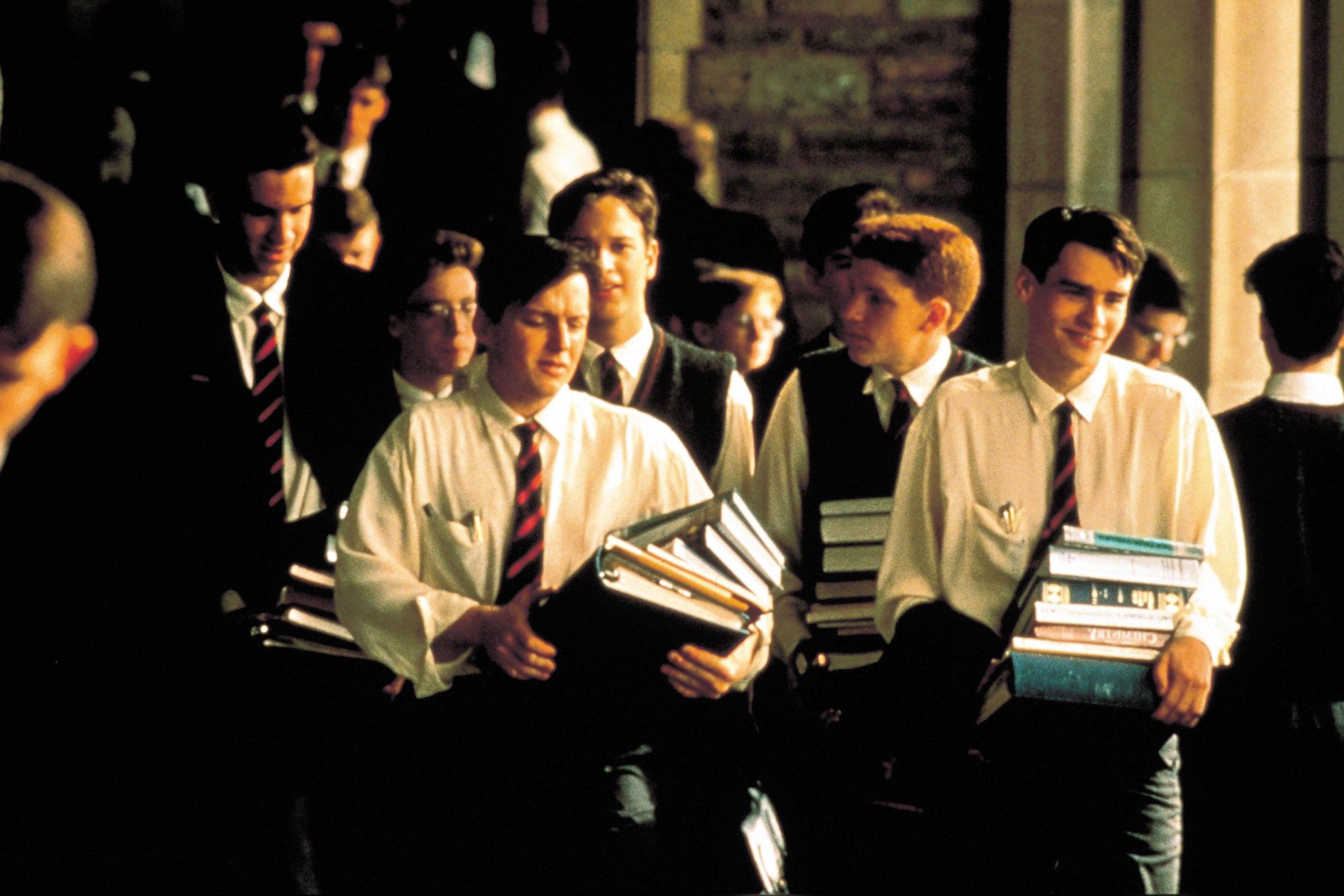The “dark academic” is smart but sullen, effortlessly cool but largely withdrawn, with rings under their eyes (spending all night in dimly lit libraries) and bruised legs (getting up to no good in between courses – a dark academic typically has a dark secret).
They’ve got an eye for Gothic architecture and can wax poetic about Keats, Woolf and other titans of the Western canon. They sip tea by candlelight, stay up late writing at their vintage desk and thrive when the weather is dreary.
And most often, the dark academic is a TikTok user, emulating a look they’ve only seen onscreen or in books, and living a version of a dream life in which they can spend their days reading the classics in a centuries-old library.
“Dark academia,” for all its tweed blazers, scuffed loafers and schoolgirl-plaid skirts, isn’t just a material aesthetic for some, but a lifestyle. Its sacred texts include Donna Tartt’s “The Secret History” and Oscar Wilde’s classic “The Picture of Dorian Gray.” Many of its acolytes harbored dreams of attending storied schools across the pond and studying history, art or classic literature – subjects some college students might be discouraged from pursuing.

That’s what drew Talya Glowacz, who posts on TikTok as CosyAcademia, to the aesthetic – the “romanticization of learning.” Before the pandemic, she was attending a master’s degree program at the University of Exeter in England with plans to become a college professor. When Covid-19 sent her back to the US, she longed to return to her historic campus. Finding dark academia was the next best thing.
“I think that building these ‘aesthetic’ communities virtually via social media has allowed for a lot of people to meet friends and explore their interests despite the isolation of the pandemic,” she told CNN in an email.
School’s been in and out since March 2020, so dressing – and living – like a “dark academic” is a way for followers to meld their uniform past, unstable present and aspirational future.
Dark academia combines smarts and style
Though versions of “dark academia” permeated Tumblr and Pinterest in the mid-2010s, the trend resurged in popularity when the pandemic began. Being forcibly separated from her school by Covid-19 made Glowacz crave the experience all the more – she wanted to romanticize an experience she’d lost.
She wasn’t alone – the hashtag gained traction on TikTok at the end of 2020 and continued to gain momentum and find fans. Soon, young people stuck at home were donning wooly sweaters over collared shirts and pulling up knee-high socks for looks that resembled uniforms they might have seen in “Dead Poets Society” or “Derry Girls.”
Fashion is one of the draws of dark academia – sweater vests are in! – but it’s ballooned into something far wider. On TikTok, users share violin renditions of Arctic Monkeys anthems, cosplay scenes as schoolboys running from an unknown evil and pleasing close-ups of tea being poured, rain beating against a bedroom window and the flicker of a waning flame.
“It’s portrayed generally as a sort of secretive, individual, and intense thirst for knowledge which is what makes it moody and ‘dark’ academia,” Glowacz said.
In Glowacz’s videos, she shares her collection of antique leather-bound books, creates grainy videos of sealing envelopes with wax from a melted candle and outfit pairings for every season. While the fashion elements of the aesthetic are fun to play with, she said that she’s happier finding friends with similar interests, not just similar style.

Alice Sidgwick, a lifelong reader who “loves studying, writing, vintage clothes and old buildings,” said she didn’t so much “join” the trend as she did discover an umbrella under which her pre-existing interests fell.
“Dark Academia really is just a shorthand for all the things I like,” Sidgwick, DarkAcademiaCandles on TikTok, told CNN in an email. “It’s nice to see people posting things that are celebrating how hard they’re studying, or painting, or writing, and that other people can join in on that. I think that’s a very positive thing to come out of TikTok.”
When the pandemic began, Sidgwick started selling candles inspired by characters from classic literature – a vetiver and mahogany scent for Mr. Darcy, amber and vanilla for Jay Gatsby – complete with a handwritten love letter, wax-sealed, from the character. When she discovered the dark academia hashtag on TikTok, she knew she found her customer base. Now, her business is named for the aesthetic she loves.
Dark academia can have a dark side
Some of the “dark academia” elements that its followers love are what make it potentially problematic to others.
Rowan Ellis, a UK YouTuber who creates videos on LGBTQ history, said in a 2021 video that the elitism and emphasis on White authors and artists baked into dark academia can be limiting and harmful.
Ellis said in the video she attended Durham University, a prestigious college whose town often appears in aspirational “dark academia” posts. But her experience there didn’t reflect those fantasies – there, and at other universities in the UK, classism made students feel unwelcome and a lack of financial support left them saddled with debt.

The Western cannon of “classic literature” is largely comprised of White authors writing about White protagonists, Amal Abdi wrote for Refinery29. And because prestigious institutions for so long excluded Black students and people of color, when their history goes unquestioned or even celebrated, dark academics may perpetuate the same exclusion, Ellis said.
“They wear the style of the elite and valorize the subjects of those institutions, but the long tradition of student protest and political engagement seems missing in a lot of cases,” she said in the video.
Dark academia isn’t inherently offensive, Ellis said, but to make it an inclusive community, its followers should reckon with the history of the institutions they valorize.
The trend keeps growing
Newer creators are working to dismantle the predominantly White reputation of dark academia. Books like “Ace of Spades” by Faridah Àbíké-Íyímídé, about two private school students whose futures are threatened by a dangerous bully, and films like “Selah and the Spades,” about a popular group at a prestigious boarding school who harbor dark secrets, center Black protagonists in familiar stories. Dark academics from all backgrounds are adding them to lists of recommended reading and viewing. (Though the book and film share similar titles, they’re set at different institutions with unrelated characters.)

TikTok users like CosyFaerie create content for what she calls the “Black girl, dark academia side of TikTok,” where she dons frilly shirts to sip tea, reads a yellowed copy of “Pride and Prejudice” and tours museums.
“I was obsessed with dark academia … but could barely see any representation,” she wrote in one video. “So I decided to do it myself [smiley emoji] and add a little bit of spice.”
Dark academia’s appeal is wide and only growing (and it’s seasonally appropriate, too – nothing says “winter” like curling up with a book in bed or layering with a thick sweater). And even with school mostly back in session, Glowacz still takes comfort in the world of dark academia, where it’s perpetually drizzling and there’s always a piping-hot cup of tea waiting for her.
